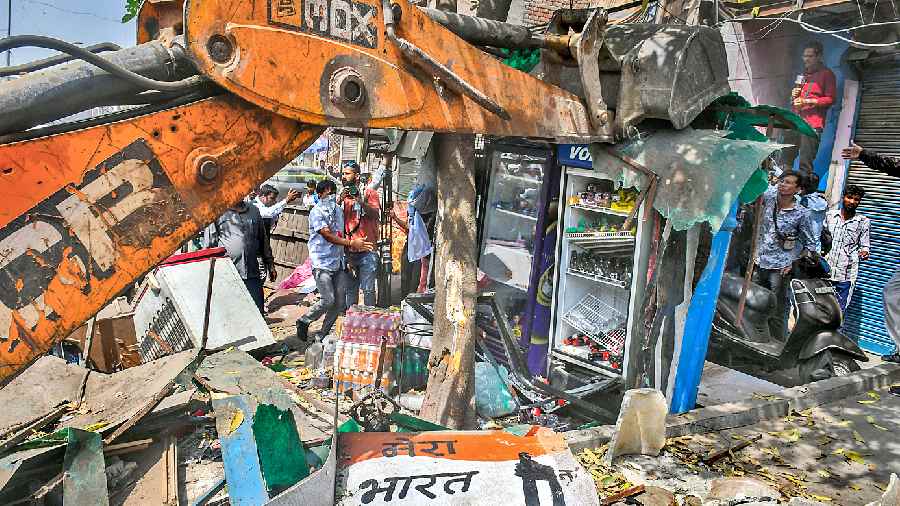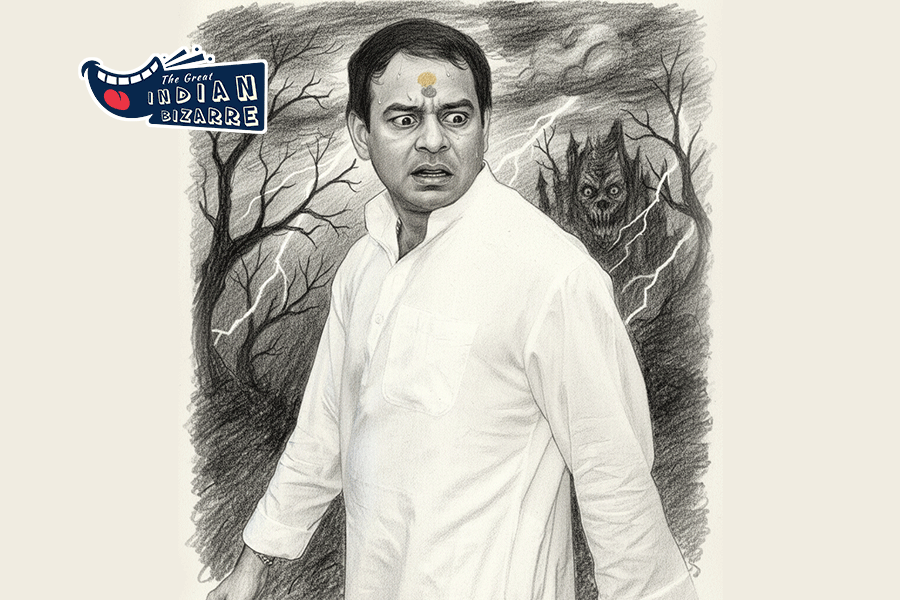Violence has a creative power which narratives about it cannot match. In India in particular, violence has an inventive quality, both at the level of performance and discourse. Media reports fail to capture this. The media read violence as sporadic, episodic, discontinuous. Each event is read as isolated, and the narrative loses steam beyond a week. When erasure is almost inevitable, one fails to see the systemic nature of violence as a discourse. One senses this when one reads reports on the Jahangirpuri violence that see it more as an urban hiccup rather than as a landmark in the history of riots.
Reading the reports tinged with a sense of anxiety, one realises that Jahangirpuri has to be read as part of a serial discourse on violence. What one grasps through the nuances of storytelling is that violence as a discourse and as a performative act has changed. One has to capture this if Jahangirpuri has to be understood as a text.
Riots as violence resisted a standardised format till the 1970s. They were read as sporadic, spontaneous and short-lived; an interlude before warring factions settled down to live peacefully as neighbours. The structural duration of the conflict was short and one could sense the anticipation of rapprochement.
Today, riots have changed in three ways. First, the duration of violence and the nature of brutality have changed. Violence is far more intensive and, yet, has an impersonal quality that smacks less of revenge and more of elimination. Second, the language of discourse, the normative perspective on a riot, has withered. The minority is no longer intrinsic to the social whole. There is little sense of ethical repair or apology. The language of reportage has also changed: as one critic put it, ‘language itself becomes suspect as it becomes impersonal, exterminist. The goal is now not the murder of an individual but an act of demographic elimination.’ Ersatz attempts at reconciliation, even peace processions, sound more like a surreal civics or flag marches conducted by civilians. When riots are part of governance, the language of reconciliation sounds artificial.
Consider the 1980s, beginning with the anti-Sikh riots that signalled the rise of exterminism. There is little sense of apologia as one seeks to eliminate sections of a population. The State becomes the main perpetrator as well as the perpetuator of the discourse. For example, pits are dug up in advance and filled with chemicals to facilitate the elimination of bodies. By the time of the 2002 riots, such acts of elimination were seen as acts of rectification of history. Riots reworked the past as policy and history.
By 2002, riots, rather than elaborating the production of violence, emphasised its consumption. Today, the Selfie becomes a part of such history facilitating repetition and replay. The record is not for proof but for narcissistic display. When history is rectified, the minority is no longer part of a community. It becomes a pathology that one must eradicate to stabilise majoritarian democracy.
One must emphasize that all this celebration of violence takes place within the discourse of electoral democracy. Riots have become part of the rhetoric of the greatest good of the greatest number. Riots have become a ritual, a prelude to elections as violence helps consolidate vote banks. The discourse on healing and apology, once part of the normative frame of the idea of a minority, is now ignored. As Jahangirpuri showed, the minorities are sheer dirt — to be dusted off and cleansed. Worse, the ruling regime faces a riot with immaculate silence. The prime minister is part of this complicity of State policy as he enacts a Tussauds of silence. Riots are meant to create a politics of anxiety, terminating any sense of belonging a member of a minority community may feel. Simultaneously, violence becomes systemic, demographic and more efficient, creating social distance from the idea of the rule of law. A riot is an erasure machine for people and memories. The efficiency and indifference it conveys now belong to a different order of evil. To view the Jahangirpuri violence as a minor footnote to an urban hiccup will not do. One cannot read it as an isolated event because it is now part of a continuing discourse on violence as the new civics.
Third, one senses that a new imagination of a plural city is required to rescue minorities from such stagnant imagination.
The bulldozer has become the knee-jerk symbol of this new era. Jahangirpuri semaphores the new grammar of riots reinforcing majoritarianism. Bulldozers are what the folklore of Bollywood would call a cameo role. It pretends to distract from the script. What was, in fact, tacit or silent becomes obvious. Bulldozers emphasise the unwanted nature of recalcitrant minorities. One does need to invoke the Rohingya to legitimise such behaviour. A friend of mine defined majoritarianism as an electoral possibility that allows one to eliminate people. It is a variant of genocide through majoritarian consent.
The Jahangirpuri riots emphasise that the majority, rather than being a trustee of the margins, now treats them as dispensable. Minorities in the language of genocide are ethnic waste. The bulldozer symbolises a contempt for law and the normative structures of democracy. The obscenity of Jahangirpuri could not be clearer. Now minorities, as defined by the majority, are meant to inaugurate the post-normalcy of hate. Such a situation allows for neither reconciliation nor ethical repair.
Only Shaheen Bagh, only a few miles from Jahangirpuri, can withstand such an atrocity. Shaheen Bagh was more than a protest; it was an experiment where ordinary Muslim women showed they could be both cosmopolitan and Indian in a way that the Indian State cannot. Only a minority doubly tired of its minority status can challenge Jahangirpuri. When a minority reclaims official citizenship, riots move from normalcy to pathology. The language and the rituals of democracy become alive again. Such a sustained moral invention can prevent Jahangirpuri from becoming formulaic for epidemic demolition and the new brutality of riots. Democracy reinventing itself can change the stunted nature of majoritarian ethics.
Shiv Visvanathan is a member of Compost Heap, a group pursuing alternative imaginations











